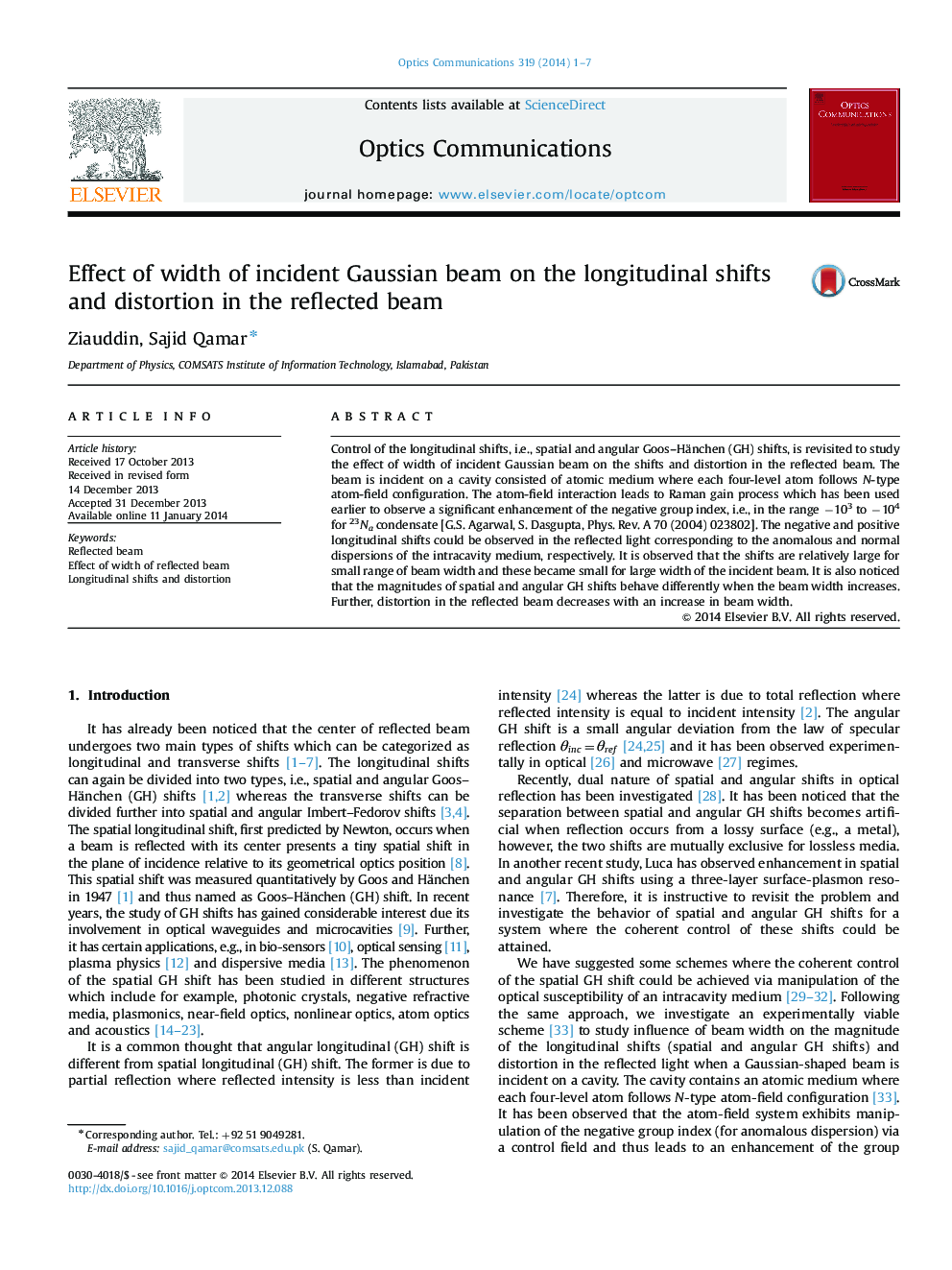| Article ID | Journal | Published Year | Pages | File Type |
|---|---|---|---|---|
| 7931243 | Optics Communications | 2014 | 7 Pages |
Abstract
Control of the longitudinal shifts, i.e., spatial and angular Goos-Hänchen (GH) shifts, is revisited to study the effect of width of incident Gaussian beam on the shifts and distortion in the reflected beam. The beam is incident on a cavity consisted of atomic medium where each four-level atom follows N-type atom-field configuration. The atom-field interaction leads to Raman gain process which has been used earlier to observe a significant enhancement of the negative group index, i.e., in the range â103 to â104 for 23Na condensate [G.S. Agarwal, S. Dasgupta, Phys. Rev. A 70 (2004) 023802]. The negative and positive longitudinal shifts could be observed in the reflected light corresponding to the anomalous and normal dispersions of the intracavity medium, respectively. It is observed that the shifts are relatively large for small range of beam width and these became small for large width of the incident beam. It is also noticed that the magnitudes of spatial and angular GH shifts behave differently when the beam width increases. Further, distortion in the reflected beam decreases with an increase in beam width.
Related Topics
Physical Sciences and Engineering
Materials Science
Electronic, Optical and Magnetic Materials
Authors
Ziauddin Ziauddin, Sajid Qamar,
